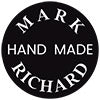
How to Hold an English Pool Cue Stick: Master Your Grip for Precision and Control
The way you hold your cue is crucial to mastering the English pool. It’s more than just gripping a piece of wood, it’s about building a rapport between you, the billiard cue, and the table. The right grip and stance can transform your game, making your shots smoother and more accurate. Whether you’re aiming for that tricky corner pocket or just trying not to embarrass yourself at the local pub, mastering the right grip is your golden rule. So, let’s dive into how to hold your English pool cue correctly and unlock your potential for increased accuracy and control.
Why Your Grip Matters
The wrong grip is like brewing tea with cold water—utterly pointless. Get it right, and you’ll:
✔️ Control the cue ball like a pro (goodbye wild spins!).
✔️ Line up shots with laser precision.
✔️ Avoid looking like a numpty at the table.
Step 1: Stance Like a Pro - The Foundation of Your Game
Before your hands touch the cue stick, nail your stance. Think of it as the base for a cracking innings in cricket—get it wrong, and everything wobbles.
Posture: Stand relaxed but alert, feet shoulder-width apart, knees gently bent, body aligned with the shot, leaning slightly forward like a taut spring ready to pounce.
Balance: Distribute your weight evenly—no leaning too far left or right, mate. This stability is your secret weapon for consistent shots.
Pro Tip: Keep your chin over the pool cue. If your nose isn’t almost brushing the stick, you’re too upright.
Step 2: The Grip - Your Handshake with the Cue
Your grip is a handshake with the cue—confident, not clingy.
Find the sweet spot: Grip 4–5 inches above the billiards cue’s balance point—your forearm should form a natural 90° angle. No protractor is needed, just eyeball it.
Finger Control: Use your thumb and index finger as guides, with the middle finger to add power to a strong shot. Avoid the “death grip”—it’ll tense your arm and ruin your flow.
Step 3: Bridge Hand - Your Guiding Light
Your non-dominant hand is the architect of precision. Master these bridges:
Open Bridge (Beginner’s Best Mate): Slap your hand flat on the pool cue table, fingers spread like a starfish to create a cradle for the cue. Nestle the stick in the “V” between thumb and index finger. Adjust the height by arching your palm. Too high? You’ll sky the ball. Too low? Hello, miscue.
Closed Bridge (Pro Move): Form a fist, then create a loop with your thumb and index finger. This locked-in position gives laser-like control for tricky pots.
Step 4: Tricky Shots? Easily Done
When the balls get cheeky, use these advanced techniques:
Rail Bridge (for balls near the edge): Hook your thumb under the playing cue and rest it on your index finger—like a mini seesaw. Ideal for those “how is this even legal?!” angles.
Elevated Bridge (to hop over blockers): Plant your index finger and pinky on the table, middle fingers tucked in—a tripod for shaky situations. Use this when another ball’s hogging your space.
Mechanical Bridge (no shame here): The “granny stick” isn’t just for grannies. Slide it into position like a pro and own that long shot. Even Ronnie O’Sullivan uses one—zero bragging rights lost.
Step 5: Cue Ball Control - The Art of Precision
Hitting the cue ball’s center is non-negotiable. One mistake and you'll be spinning like a runaway snooker ball. Focus - imagine the cue ball is the dartboard and your cue is the arrow.
Step 6: Follow Through - The Unsung Hero
You’ve got your grip and bridge set, your aim is spot on, but what’s next? The follow-through. A great shot doesn’t end when the cue stick hits the ball. Your follow-through is just as important. After striking the cue ball, let your cue smoothly glide forward, maintaining your balance and control. Your shot doesn’t end at impact. Let the cue glide forward smoothly after contact—like a bowler’s follow-through. Skip this, and you’ll leave shots hanging.
Step 7: Cue Weight - Find Your Match
For most UK players, a 19-20 ounce cue is the best choice. When choosing your English pool cue, make sure it feels right in your hands. If it’s too heavy, you’ll strain your wrist; if it’s too light, you won’t have the power to control your shots. A well-balanced cue is your best friend — one that feels like it was made for your grip and playing style.
Step 8: Practice Makes Perfect
Like any skill, mastering your grip and shot requires practice. The more you play, the more natural your hand position will feel. Start slow, focus on your technique, and let muscle memory kick in, you’ll notice a smoother, more controlled one when playing. As the old saying goes, “Rome wasn’t built in a day” — but with patience, practice, and the right grip, you’ll be sinking pots like a seasoned pro.
Final Thoughts
Holding a pool cue is equal parts science and art. From stance to follow-through, every detail counts. So next time you’re at the table, remember: it’s not just about hitting balls—it’s about becoming one with the cue stick. Get the grip right, and you’ll unlock a world of control, confidence, and maybe even a few “How did he do that?” moments. Now go forth, pick up your chalk, and conquer that table!
